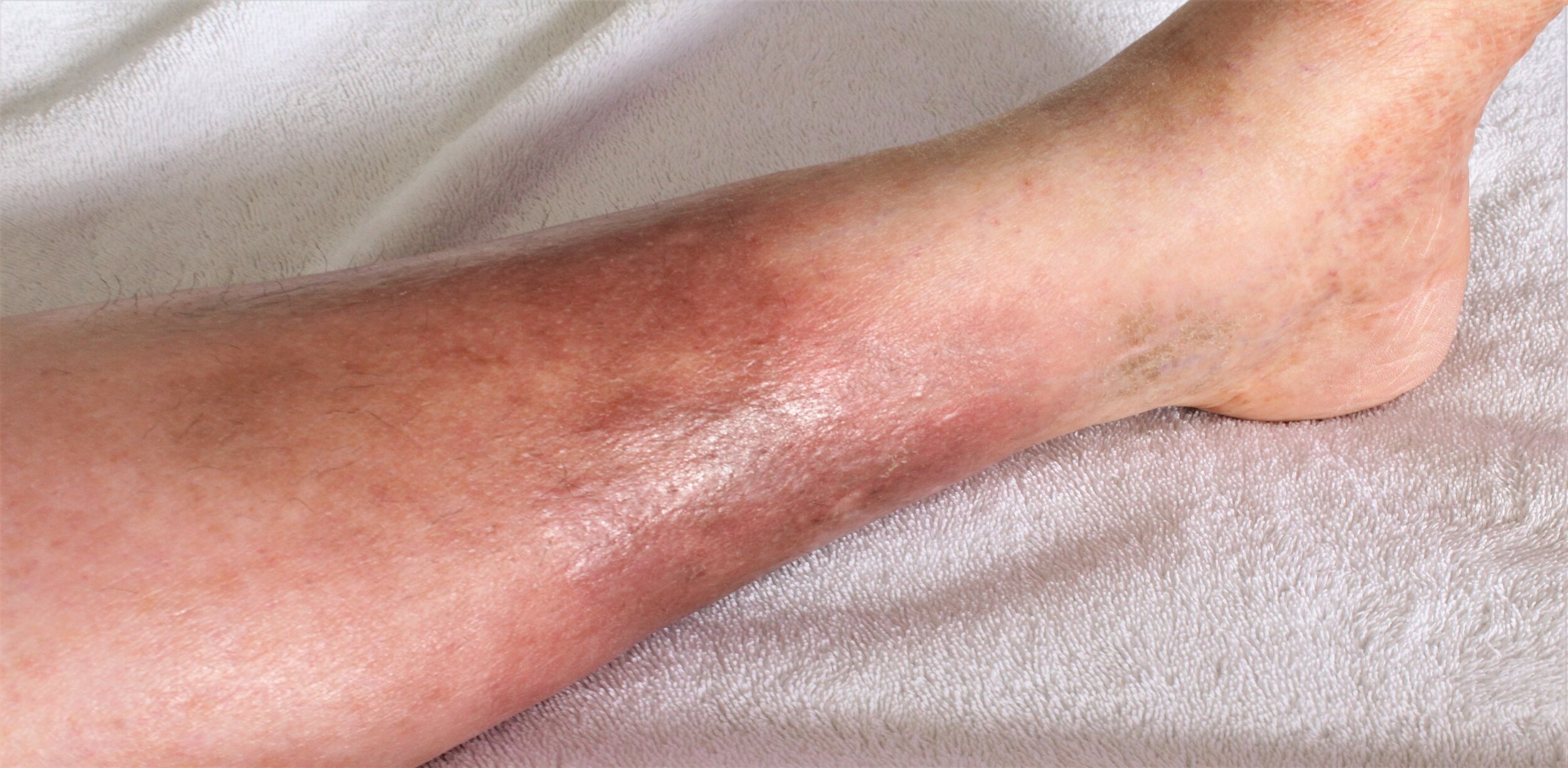What are the causes of erysipelas?
Erysipelas can occur when streptococci penetrate the upper layers of the skin via fine skin lesions. These bacteria are found on the skin of most people and are in principle harmless as long as they are only on the surface of the skin. However, when injured, they can penetrate the skin and cause inflammation. Even the finest lesions, such as scratches and abrasions, cracks in brittle skin or even tiny injuries to the nail bed, serve as entry points for the bacteria.
Normally, our lymphatic system is able to fight such bacterial infections. Invading bacteria are transported away and killed via the lymphatic channels. In the case of pre-existing diseases of the lymphatic vessels, however, this defense mechanism functions only to a limited extent. For example, edema increases the risk of developing erysipelas. We therefore recommend that patients with known risk factors undergo targeted lymphedema treatment.
It is also important to know that lymphedema can not only cause erysipelas, but conversely is also a common consequence of erysipelas. The inflammatory processes can cause severe damage to the affected lymphatic vessels and lead to chronic lymphedema. In some cases, this can lead to severe progression to elephantiasis, a massive lymphedema that considerably restricts those affected in their daily lives. This favors a recurrence of erysipelas, so that the patient finds himself in a vicious circle that can only be broken by intensive and targeted erysipelas treatment.
What risk factors favor erysipelas?
There are various risk factors that must also be taken into account in the treatment of erysipelas. On the one hand, skin injuries such as wounds, athlete’s foot or even eczema favor the occurrence of erysipelas. Wherever the skin surface is not intact, the bacteria can penetrate into the upper layers of the skin. Another important risk factor is poor blood circulation or supply to the skin. Edema or impaired lymphatic drainage also increase the risk of erysipelas of the lower legs. Treatment here is aimed primarily at improving blood circulation or lymph flow in the long term.
Patients with diabetes are particularly at risk. Here it is important to check the skin regularly for diseases and injuries so that infections do not occur in the first place. In the event of an infection, erysipelas treatment should be initiated as quickly as possible and the skin lesion treated in parallel.
What are the symptoms of erysipelas?
Erysipelas is recognizable by a two-dimensional, clearly demarcated redness and swelling. The affected area reacts painfully to pressure and may form tongue-shaped extensions if erysipelas spreads along the lymphatic channels. In severe cases, blistering and swelling of the lymph nodes may occur. In this case, immediate inpatient erysipelas treatment is essential. Erysipelas is usually accompanied by non-specific symptoms such as fever, headache and pain in the limbs, chills and a general feeling of illness. These symptoms often occur before the characteristic reddening of the skin appears.
Erysipelas can occur on different parts of the body. Erysipelas on the face and erysipelas on the lower leg are particularly common. In principle, treatment is independent of the site where erysipelas has occurred.
How can erysipelas be treated?
Treatment of erysipelas consists primarily of antibiotic therapy, usually with penicillin. The form and dosage in which the antibiotic is administered depends on the severity of the erysipelas. The duration of treatment is also individualized. As a rule, erysipelas treatment is maintained until the patient is free of fever, and then continued for a few more days.
In severe cases, erysipelas treatment is performed as an inpatient. If the patient only has mild symptoms and erysipelas treatment is initiated at an early stage, outpatient therapy is also an option. Our specialists always keep an eye on your individual medical history and also take into account whether specific risk factors are present.
Accompanying erysipelas treatment, symptoms such as fever or wound pain can be treated with medication. In the case of erysipelas on the leg, treatment is supported by elevation. In severe cases, prolonged bed rest may also be required, increasing the risk of thrombosis. This applies in particular to patients with existing venous weakness. In this case, blood-thinning medication may be administered. Another component of erysipelas treatment can be compression therapy. This prevents renewed fluid retention and thus supports the treatment of erysipelas.
In order for the treatment of erysipelas to be successful in the long term, we always take into account the causes. For example, skin diseases and injuries should be treated in the course of erysipelas treatment to prevent renewed infections. The same applies to risk factors such as edema, venous diseases or circulatory disorders.


